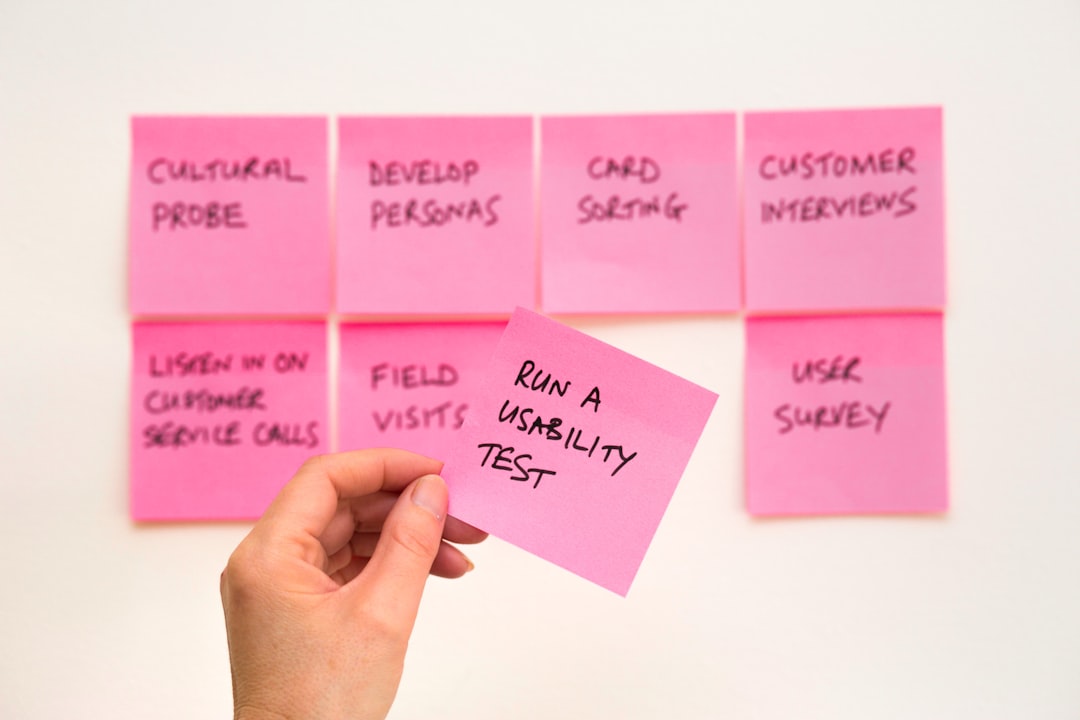Exploring Innovations in Software Development for Enhanced User Experiences: This article discusses the evolving landscape of software development, including user-centric design, the rise of Agile methodology, leveraging cutting-edge technologies, and emerging trends in user engagement and personalization.
Introduction: Evolving Landscape of Software Development Innovations
In the rapidly evolving digital landscape, software development continues to push boundaries to create innovative solutions that enhance user experiences. By embracing user-centric design principles and cutting-edge technologies, software developers are revolutionizing the way users interact with digital products. For example, the integration of AI, XR, and Web 3.0 is reshaping UX design, offering immersive experiences and decentralized virtual spaces.
User-centric design (UCD) lies at the core of software development innovations, focusing on creating products that are not only functional but also intuitive and user-friendly. This approach ensures that software solutions are tailored to meet the specific needs of users, ultimately leading to higher user satisfaction and engagement. For instance, the development of a healthcare app that incorporates UCD principles can streamline the user interface, offer personalized health recommendations, and enhance overall user experience, thereby improving patient engagement and well-being.
The rise of Agile methodology in software development has brought about a shift towards more collaborative, adaptable, and responsive practices. By breaking down the development process into smaller increments, Agile methodology enables teams to address changing requirements, prioritize user needs, and deliver high-quality products efficiently. For example, a team developing a project management tool using Agile methodology can continuously gather feedback from users, iterate on features, and ensure that the final product meets user expectations, resulting in a more user-centric and effective solution.
Understanding User-Centric Design
User-Centric Design (UCD) goes beyond traditional design approaches by focusing on creating software products that are specialized, useful, usable, and fluent to enhance the overall user experience. By prioritizing user needs and preferences, UCD ensures that software solutions are intuitive, accessible, and tailored to meet the specific requirements of the target audience.
In the context of user-centric design, consider the example of a travel booking platform that adopts UCD principles. By conducting user research, analyzing user behaviors, and designing a seamless booking process, the platform can enhance user satisfaction, increase conversion rates, and build long-term customer loyalty. This user-centric approach not only improves the usability of the platform but also establishes a strong emotional connection with users, leading to a positive user experience.
The incorporation of UCD principles leads to higher user satisfaction, increased engagement, and improved business metrics. By focusing on the needs and preferences of users throughout the design and development process, software teams can create products that resonate with their target audience, drive user adoption, and achieve business objectives.
The Rise of Agile Methodology
Agile methodology promotes collaboration, adaptability, and responsiveness in software development, allowing teams to deliver high-quality products efficiently. The iterative nature of Agile methodology enables teams to address changing requirements, prioritize user needs, and incorporate feedback throughout the development process.
Agile methodologies, such as Scrum and Kanban, facilitate continuous improvement, transparency, and timely delivery of software products. By embracing Agile practices, teams can respond quickly to market changes, deliver incremental value to users, and adapt to evolving business needs in a dynamic digital landscape.
 Benefits of Agile Methodology
Benefits of Agile Methodology
Agile methodologies offer numerous benefits, including enhanced collaboration, flexibility, and customer satisfaction. By breaking down projects into manageable iterations, Agile methodology empowers teams to make data-driven decisions, prioritize features based on user feedback, and deliver software solutions that meet user expectations.
An example illustrating the benefits of Agile methodology can be observed in the development of a social media platform. By adopting Agile practices, the development team can release new features regularly, gather user feedback, and refine the platform based on real-time data. This iterative approach not only accelerates time-to-market but also ensures that the platform remains competitive and engaging for users.
 The Significance of User Feedback Loops
The Significance of User Feedback Loops
Implementing user feedback loops is crucial for collecting valuable insights, identifying pain points, and aligning product features with user preferences. By establishing continuous feedback mechanisms, software teams can make informed decisions, prioritize enhancements, and refine the user experience iteratively.
Continuous feedback loops enable software teams to make data-driven decisions, prioritize enhancements, and refine the user experience iteratively. By engaging users in the feedback loop, software developers can gain valuable insights, build customer loyalty, and create products that resonate with their target audience.
An illustration of the significance of user feedback loops can be seen in the development of an e-learning platform. By collecting feedback from students, analyzing learning behaviors, and iterating on course content, the platform can enhance the educational experience, improve student engagement, and drive better learning outcomes. This iterative feedback loop ensures that the platform evolves based on user needs and preferences, ultimately leading to a more personalized and effective learning experience.
Leveraging Cutting-Edge Technologies for Enhanced User Experiences
Cutting-edge technologies, such as Artificial Intelligence (AI), Augmented Reality (AR), and Blockchain, play a pivotal role in creating innovative user experiences in software development. By leveraging these technologies, software developers can personalize content, simulate immersive experiences, and ensure data security, thereby enhancing user engagement and satisfaction.
Artificial Intelligence (AI) and Machine Learning (ML) algorithms empower software applications to personalize content, predict user behavior, and automate tasks, enhancing user engagement. For example, a retail e-commerce platform can utilize AI algorithms to analyze customer preferences, recommend personalized products, and optimize the shopping experience. This personalized approach not only increases user satisfaction but also drives conversion rates and customer loyalty.
Augmented Reality (AR) and Virtual Reality (VR) technologies create immersive experiences, simulate real-world scenarios, and provide interactive interfaces, enriching user engagement and entertainment. The integration of AR and VR in software development opens new possibilities for industries such as education, gaming, and tourism, offering users unique and interactive experiences that enhance user satisfaction and retention.
Blockchain technology ensures data security, transparency, and trust in software applications, enabling secure transactions and decentralized interactions. By implementing blockchain technology, software developers can create decentralized applications (DApps) that offer users autonomy, privacy, and control over their digital assets, fostering a sense of security and ownership among users.
Emerging Trends in User Engagement and Personalization
Personalized user experiences leverage data analytics, user segmentation, and behavior tracking to deliver tailored content, recommendations, and interactions. By understanding user preferences and behaviors, software developers can create personalized experiences that resonate with users, drive engagement, and foster long-term customer relationships.
Conversational AI tools, chatbots, and virtual assistants enhance user engagement, provide instant support, and streamline communication channels in software applications. For instance, a customer service chatbot integrated into an e-commerce platform can assist users in finding products, answering queries, and completing purchases, offering a seamless and personalized shopping experience. This conversational AI tool not only improves customer satisfaction but also increases operational efficiency for businesses.
Facial recognition technology enables personalized interactions, authentication, and emotion analysis, enhancing security and user experience in various software products. By incorporating facial recognition technology, software applications can offer users secure access, personalized services, and interactive experiences, thereby creating a more engaging and trustworthy user experience.
 The Role of Emerging Technologies in Shaping Software Development
The Role of Emerging Technologies in Shaping Software Development
Internet of Things (IoT) devices collect real-time data, enable smart functionalities, and enhance user convenience through interconnected systems and automated processes. By leveraging IoT technologies, software developers can create innovative solutions that improve user experiences, optimize workflows, and introduce new possibilities across various industries.
Edge computing reduces latency, optimizes data processing, and improves network efficiency by processing information closer to the data source. This technology enables faster response times, enhanced security, and improved scalability in software applications, leading to a more seamless and efficient user experience.
Quantum computing accelerates complex computations, cryptography, and data analysis, revolutionizing software development, encryption, and secure data transmission. By harnessing the power of quantum computing, software developers can solve intricate problems, enhance cybersecurity measures, and unlock new capabilities that drive innovation and efficiency in the digital landscape.
Cybersecurity measures, such as encryption, authentication protocols, and secure coding practices, safeguard software applications against cyber threats, data breaches, and unauthorized access. By prioritizing cybersecurity in software development, organizations can protect user data, build trust with customers, and ensure the integrity and confidentiality of their digital assets.
Agile and Lean Methodologies for Modern Development Practices
Agile methodologies emphasize customer collaboration, iterative development, and responding to change, fostering adaptability and customer satisfaction. By adopting Agile practices, software development teams can deliver value to users, respond to feedback, and adapt to evolving requirements, ensuring that their products meet user expectations.
Lean practices focus on minimizing waste, optimizing workflows, and delivering value to customers by streamlining processes and eliminating non-essential activities. By embracing Lean principles, software teams can improve efficiency, reduce costs, and enhance customer satisfaction by focusing on delivering high-quality products that meet user needs and preferences.
 The Future of Software Development: Innovations and Adaptations
The Future of Software Development: Innovations and Adaptations
Serverless computing enables scalable, cost-effective, and resource-efficient software applications by abstracting infrastructure management and automating deployment processes. By leveraging serverless architecture, software developers can focus on building applications without managing servers, leading to increased productivity, reduced operational costs, and improved scalability.
Cloud-native technologies leverage cloud services, microservices architecture, and containerization to enhance scalability, resilience, and performance in modern software development. By embracing cloud-native approaches, organizations can build flexible and scalable applications that can adapt to changing demands, optimize resource utilization, and deliver seamless user experiences across different devices and platforms.
Low-code/no-code platforms empower citizen developers, business users, and non-technical professionals to create software applications without extensive coding knowledge or IT support. These platforms accelerate the development cycle, promote innovation, and bridge the gap between business requirements and technical implementation, enabling organizations to build custom solutions that meet their unique needs and preferences.
Designing for Accessibility and Inclusivity in Software Development
Accessibility guidelines, such as the Web Content Accessibility Guidelines (WCAG), ensure that software applications are usable by individuals with disabilities, promoting inclusivity and equal access. By adhering to accessibility standards, software developers can create products that cater to a diverse range of users, enhance usability, and ensure that everyone can access and benefit from digital solutions.
Inclusive design principles focus on diverse user needs, usability testing, and adaptive interfaces to create software products that cater to a wide range of users. By considering the needs of users with different abilities, backgrounds, and preferences, software developers can create inclusive and user-friendly solutions that provide a seamless and enjoyable user experience for all individuals.
Continuous learning in UX design involves staying updated on industry trends, user preferences, and emerging technologies to deliver innovative and user-centric solutions. By investing in continuous learning and professional development, software developers can enhance their skills, expand their knowledge, and deliver cutting-edge solutions that meet the evolving needs of users and businesses in a competitive digital landscape.
Adaptive software development practices prioritize flexibility, experimentation, and responsiveness to changing market demands and user expectations in the dynamic tech landscape. By embracing adaptive approaches, software teams can iterate on products, respond to feedback, and pivot strategies to deliver solutions that address emerging challenges and opportunities, ensuring that their products remain relevant and competitive in the ever-changing digital ecosystem.
Conclusion: Transforming User Experiences Through Innovative Software Development Strategies
By embracing user-centric design, agile methodologies, and cutting-edge technologies, software developers can revolutionize user experiences, drive innovation, and stay ahead in the competitive digital market. Through a commitment to enhancing user engagement, personalizing user experiences, and leveraging emerging technologies, software development continues to evolve and shape the future of digital interactions, creating meaningful and impactful solutions that cater to the diverse needs and preferences of users worldwide.





 Benefits of Agile Methodology
Benefits of Agile Methodology The Significance of User Feedback Loops
The Significance of User Feedback Loops The Role of Emerging Technologies in Shaping Software Development
The Role of Emerging Technologies in Shaping Software Development The Future of Software Development: Innovations and Adaptations
The Future of Software Development: Innovations and Adaptations